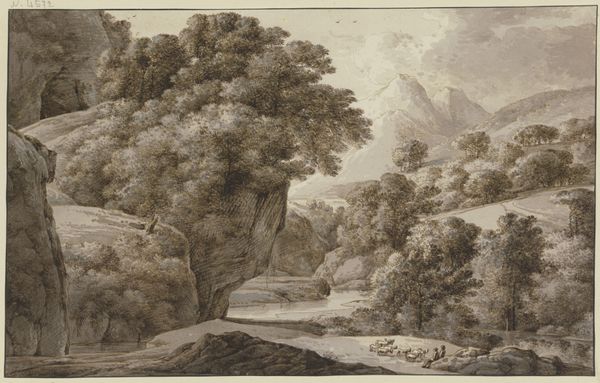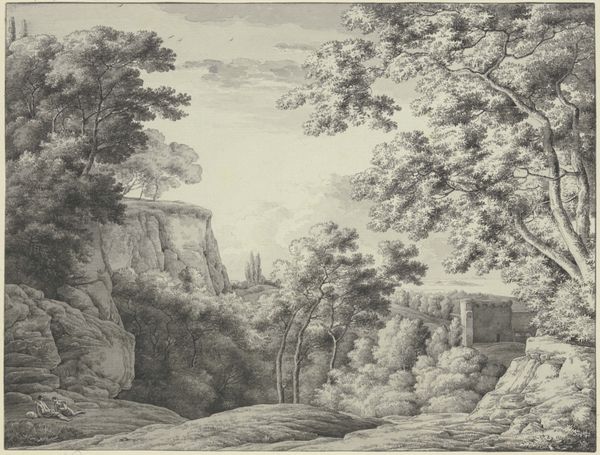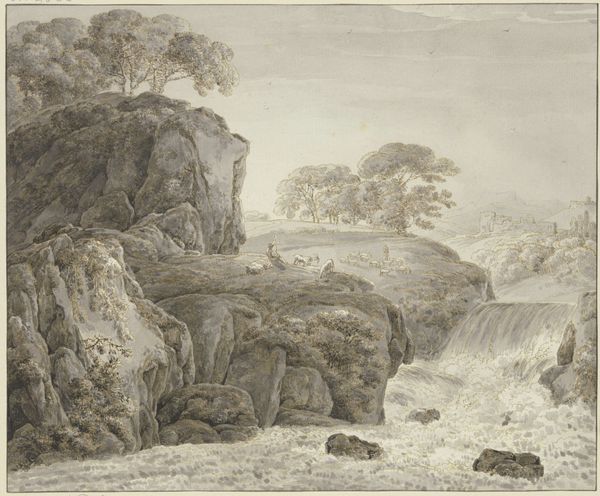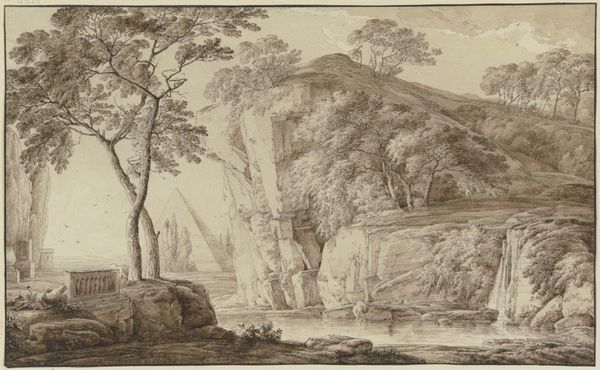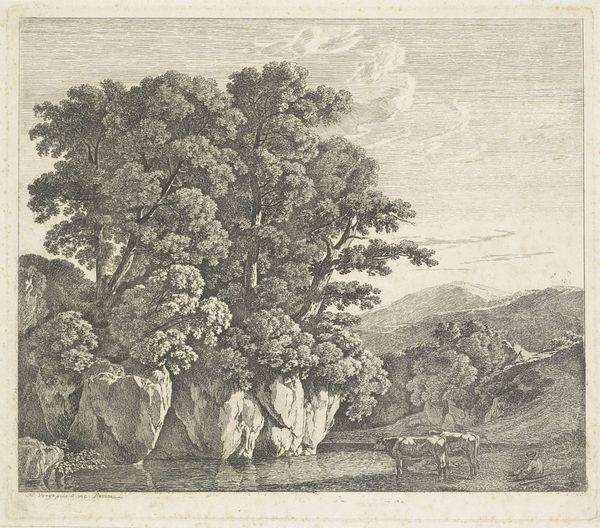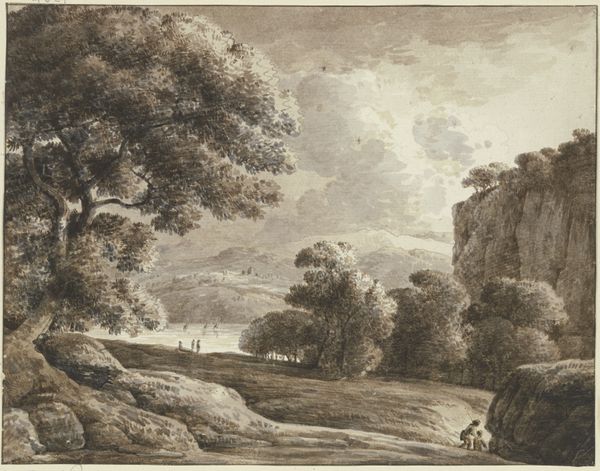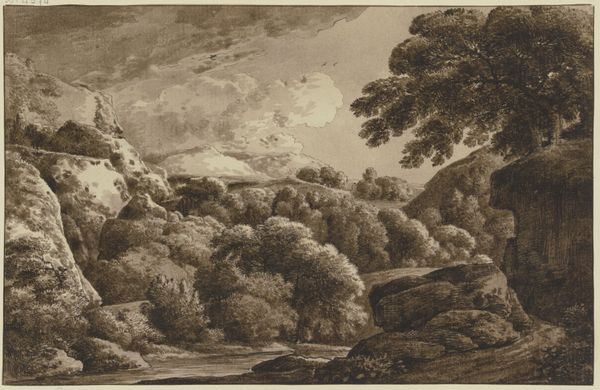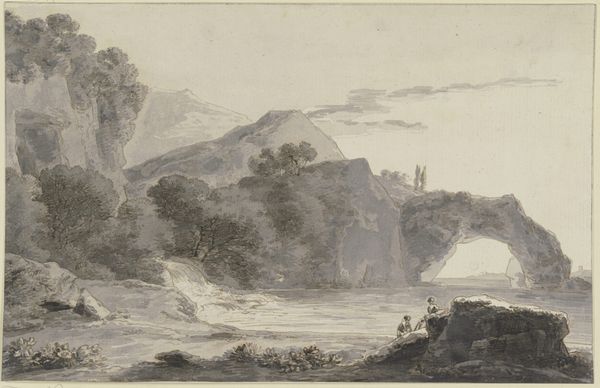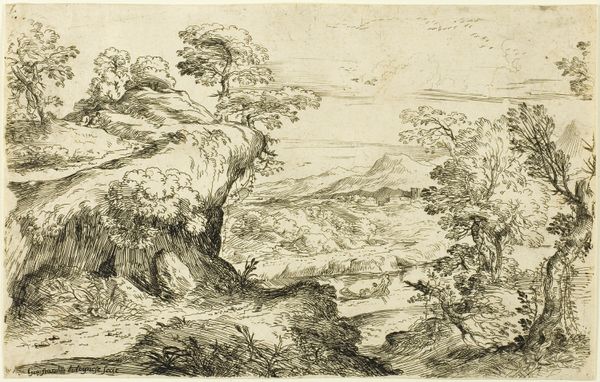
drawing, ink, pencil
#
pencil drawn
#
drawing
#
landscape
#
charcoal drawing
#
ink
#
pencil drawing
#
pencil
#
15_18th-century
Copyright: Public Domain
Editor: So, this is *Eingang zu einer Felshöhle, links ein Gewässer* – or, *Entrance to a rocky cave, with a body of water to the left* – an ink and pencil drawing, made sometime in the 18th century by Franz Kobell, residing at the Städel Museum. I find the landscape oddly calming, with all its intricate textures achieved by such delicate means. What pulls you in when you look at it? Curator: You know, it whispers a forgotten language, doesn’t it? Like a half-remembered dream. What intrigues me is the way Kobell plays with light. See how the cave mouth is shrouded in shadow, inviting exploration but also hinting at the unknown? It reminds me of those Romantic era paintings, where nature wasn’t just pretty scenery, but a powerful, almost spiritual force. Editor: Absolutely. There's definitely a sense of awe and maybe even a bit of apprehension looking at this massive rock formation. Curator: Precisely! And did you notice the figures nestled at the base of the cliff? Almost swallowed by the immensity of nature. It makes you wonder what their story is, doesn't it? Perhaps they’re travelers seeking shelter, or hermits contemplating the sublime. Or maybe, they’re just a clever trick by the artist to give a sense of scale and drama to the natural elements… Editor: It hadn't struck me that way but I see what you mean! The human element gives it a great scale. What else could you talk about? Curator: Well, I get lost in the *what ifs* - What if this place exists today? Have the rocks fallen into the river, have the trees gone to timber? Art, and art history lets us explore those feelings... What about you? Editor: I find myself wanting to visit this very spot, armed with my own pencils and inks, attempting to capture that same blend of tranquility and imposing grandeur. This has broadened my understanding beyond a simple landscape drawing; It's now a story.
Comments
No comments
Be the first to comment and join the conversation on the ultimate creative platform.

